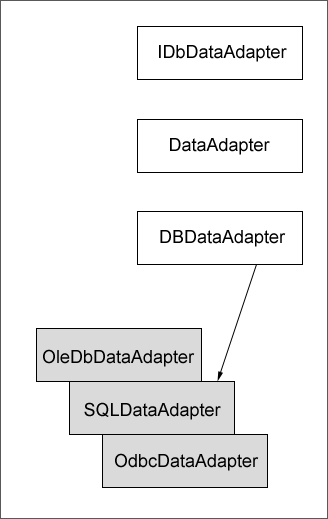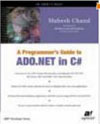This article has been excerpted from book "A Programmer's Guide to ADO.NET in C#".
DataAdapter: Adapting to Your Environment
As you're seen in figure 5-1, a DataAdapter plays a vital role in the ADO.NET architecture. It sits between a data source and a dataset and passes data from the data source to the dataset, and vice versa, with or without using commands. Now is the time you'll be using disconnected classes such as DataSet, DataTable, DataView, and DataViewManager to write Windows Forms and Web Forms based interactive database GUI applications.
The DataAdapter class for all data providers comes from the DbDataAdapter class, which in turn comes from the DataAdapter class.
An application doesn't create an instance of the DbDataAdapter interface directly, but instead it creates an instance of a class that inherits IdbDataAdapter and DBDataAdapter. As you can see from Figure 5-39, many data provider – specific classes implement IDbDataAdapter.

Figure 5-39. Data Provider–specific classes implement IDbDataAdapter
The DataAdapter enables you to connect to a dataset and specify SQL strings for retrieving data from or writing data to a DataSet. As you've seen in the beginning of this article, a dataset represents in–memory cached data. An in memory object frees you from the confines of the specifics of database and allows you to deal with the data in memory. The DataAdapter serves as an intermediary between the database and the DataSet.
Constructing a DataAdapter Object
The DataAdapter constructor has many overloaded forms. You can create a constructor with no arguments, pass a Command object, pass a Command object with Connection object as arguments, or any combination of these. You can also specify a SQL statement as string for querying a particular table or more than one table. You can also specify the connection string or a Connection object to connect to the database.
Listing 5-41 creates a connection, builds a SQL statement using the SELECT query, and passes the SQL string and the connection objects as SqlDataAdapter constructor arguments. I've been using in the previous examples.
Listing 5-41. Executing a SELECT statement using SqlDataAdapter
string ConnectionString = "Integrated Security = SSPI;" +
"Initial catalog = Northwind; " + " Data Source = localhost; ";
string SQL = "SELECT CustomerID, CompanyName FROM Customers";
SqlConenction conn = new SqlConnection(ConnectionString);
// open the connection
conn.Open();
// Create a SqlDataAdapter object
SqlDataAdapter adapter = new SqlDataAdapter(SQL, conn);
As discussed earlier, there is no difference in creating OleDb, Sql, or ODBC data adapters. The only difference is the connection string. For example, the following code snippet shows you how to create an OleDbDataAdapter object.
Listing 5-42 uses the Access2000 North wind database and accesses all records of the Orders table by using a SELECT *SQL query.
Listing 5-42. Executing a SELECT statement using OleDbDataAdapter
// create a connection object
string ConnectionString = @"Provider =Microsoft.Jet.OLEDB.4.0; " +
"Data source = c:\\ Northwind.mdb";
string SQL = "SELECT * FROM orders";
OleDbConnection conn = new OleDbConnection(ConnectionString);
// open the connection
conn.Open ( );
// create an OleDbDataAdapter objecto
OleDbDataAdapter adapter = new OleDbDataAdapter(SQL, conn);
You can also use DataAdapter's Command properties by using the Command object with OleDbDataAdapter. For example, the following code uses OleDbCommand to set the SelectCommand property of the data adapter. You can also see that OleDbDataAdapter has no arguments as its constructor:
// Create an OleDbDataAdapter object
OleDbDataAdapter adapter = new OleDbDataAdapter();
adapter.SelectCommand = new OleDbCommand (SQL, conn);
Conclusion
Hope this article would have helped you in understanding DataAdapter in ADO.NET. See my other articles on the website on ADO.NET.
 |
This essential guide to Microsoft's ADO.NET overviews C#, then leads you toward deeper understanding of ADO.NET. |